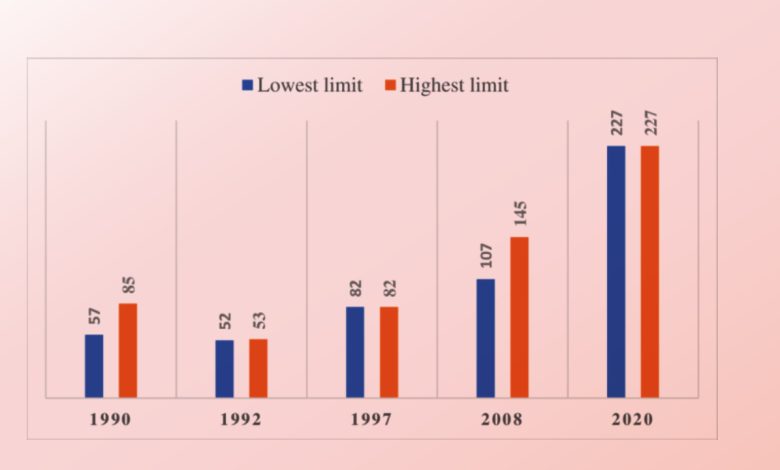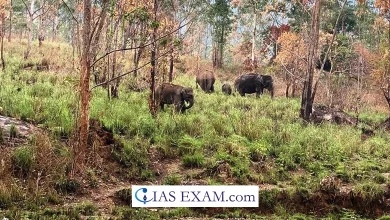Daily Current Affairs for UPSC
Asian Elephant Population and Demography Estimates
Syllabus- Environment and Ecology [GS Paper-3]

Context- According to the Asian Elephant Population Interim Report and 2023 Population Estimates, the number of elephants in Karnataka has increased.
Key Highlights
- Karnataka’s forest minister released the report ahead of World Elephant Day on August 12.
- The report was prepared after the forest department conducted a synchronized elephant census in collaboration with the neighboring states of Kerala, Tamil Nadu and Andhra Pradesh, Maharashtra and Goa.
- The number of elephants in Karnataka, which increased from 5,740 in 2010 to 6,072 in 2012, declined to 6,049 in 2017.
- This time, however, the number of pachyderms has increased by 346. With this, the number of elephants in the state has increased by 655 since 2010.
- Bandipur Tiger Reserve with 1,116 elephants had the highest density of 0.96 elephants per square kilometer followed by Nagarahole Tiger Reserve with 831 elephants at a density of 0.93.
Asian elephant
- The Asian elephant (Elephas maximus) is distributed throughout the Indian subcontinent and Southeast Asia.
- It is the largest living land animal in Asia.
- Three subspecies are currently known: the Sri Lankan, the Indian elephant, and the Sumatran elephant.
- Appearance: Smaller than their African counterparts, Asian elephants are easily recognized by their “small” rounded ears.
- They often have a hump on their back, a double-domed head with two humps, and a single “finger” on their body for grasping.
- Habitat: The habitat varies from wet tropical evergreen forests to semi-arid coniferous and scrub forests.
- However, the largest population of elephants is found in tropical deciduous forests.
- Elephants are “mega herbivores” that require vast forests and grasslands with plenty of food and water.
- Distribution: In India, the Asian elephant was once widespread throughout the country, including states such as Punjab and Gujarat. They currently exist in four fragmented populations in South, North, Central and Northeast India.
- IUCN Status: Endangered
- Threats:
- Loss of habitat
- Human-animal conflict
- Illegal wildlife trade
Elephant population in India
- India is home to 60 percent of the world’s Asian elephant population.
- Current population estimates indicate that there are approximately 50,000 to 60,000 Asian elephants in the world and nearly 30,000 in India.
Government of India measures to protect elephants
- Project Elephant: It’s been 30 years since Project Elephant. The project was launched to boost elephant conservation in India.
- It was started in 1991-1992 to protect elephants, their migration routes and their natural habitat.
- World Elephant Day: August 12 is World Elephant Day, recognizing the importance of the “gentle giants” in the world’s ecosystem.
- Launched in 2012, Day draws attention to the urgent plight of elephants, which are threatened by poaching, habitat loss, human-elephant conflict and abuse in captivity.
- Addressing human-elephant conflict: In 2020, the Ministry of Environment published a best practice document and launched a portal on human-elephant conflict.
- In addition, the government has drawn up plans for elephant corridors, which are dedicated to small areas of land to facilitate the movement of elephants.
- Special Elephant Corridors: In this regard, the Ministry provides financial assistance to the States/UTs under centrally funded “Project Elephant” programs to manage wildlife and its habitats in the country.
- In addition, under the Pradhan Mantri Fasal Bima Yojana, the government offers crop insurance to farmers against crops damaged by wild animals.
- Special Recognitions and Efforts: The Government of India has declared the elephant as a national heritage animal of India to celebrate and spread awareness about the conservation of this species.
It should be noted that the Indian elephant receives the highest level of protection under the Indian Wildlife Conservation Act (1972).





.png)



